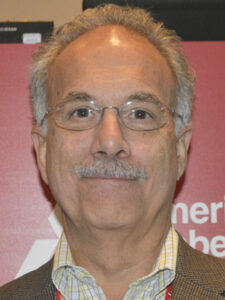
Choosing, prescribing, and assisting patients with medical devices can be a challenge for diabetes clinicians. On Monday at the Scientific Sessions, the ADA’s Diabetes Technology Special Interest Group addressed some of those challenges and sponsored a panel discussion looking at ways the group can help ADA members tackle them.
“Data may show that these devices improve clinical and quality-of-life outcomes in clinical studies. But in the real world, how do you, as a provider, navigate the technology landscape and know what to suggest and prescribe for your patients?” asked Jenise C. Wong, MD, PhD, Associate Professor of Pediatrics at the University of California, San Francisco.
Staying up to date on the latest technology, matching features to individual patients with individual needs, ensuring adequate staffing and support to interpret data and assist patients with problems, and handling vast stores of data are all challenges that clinicians face, Dr. Wong noted. She suggested turning to colleagues and professional societies such as the ADA, and also to colleagues in industry for information. But she also encouraged session attendees to consider where patients are getting their information.

Picking up on that theme, Joseph Aloi, MD, FACP, FACE, said he was presented with that very issue by one of his patients, a 78-year-old man who wanted a new glucose monitor without finger sticks. He said he saw the device on Facebook.
“This is where a lot of our patients are getting their information, on social media,” said Dr. Aloi, Chief of the Section on Endocrinology and Metabolism at Wake Forest Baptist Medical Center. “I always feel like I try and get the patient what the patient wants, and I balance that by telling the patient what I think they need. But I’m not so sure that I always know exactly what the patient needs and how to push something on them.”
Viral Shah, MD, Assistant Professor of Medicine and Pediatrics at the Barbara Davis Center for Diabetes at the University of Colorado, Denver, said physicians have to consider whether a diabetes technology is a good fit for each individual patient. Patients discontinue use of insulin pumps and continuous glucose monitoring (CGM) for various reasons, he said, including discomfort, expense, and problems with the devices.

He shared the story of a 47-year-old man with type 1 diabetes who was blind and on dialysis, and whose working wife managed his diabetes. The patient was referred by his primary care physician for insulin pump therapy, a technology that Dr. Shah didn’t think was appropriate.
“With blindness he cannot see anything on a screen, and nobody was at the home to manage his diabetes,” said Dr. Shah, who prescribed a talking meter and a Dexcom G5 so his wife could get alerts and monitor his glycemic control from work.
These clinical dilemmas require the physician to consider a number of factors, said
John Petrie, PhD, FRCP, Professor of Diabetic Medicine at the University of Glasgow, United Kingdom, including patient desire, the patient’s comfort level with technology, treatment goals, family and caregiver support, burden versus benefits, and whether a device offers reassurance or increases patient anxiety.

“The key is, what does the person with diabetes actually want? That’s so important because they’re going to be more motivated to use something that they have chosen themselves,” Dr. Petrie said.
Dr. Petrie agreed with Dr. Shah’s assessment that an insulin pump wasn’t appropriate for his blind patient, and instead suggested CGM with an alarm and remote functionality. He noted that self-pay may be necessary since Medicare wouldn’t approve CGM for this patient.
For Dr. Aloi’s patient, Dr. Petrie suggested to “keep it simple. Go with the flash. It’s relatively easy to use. The only downside is no remote monitoring.”
[gap height=”20″]